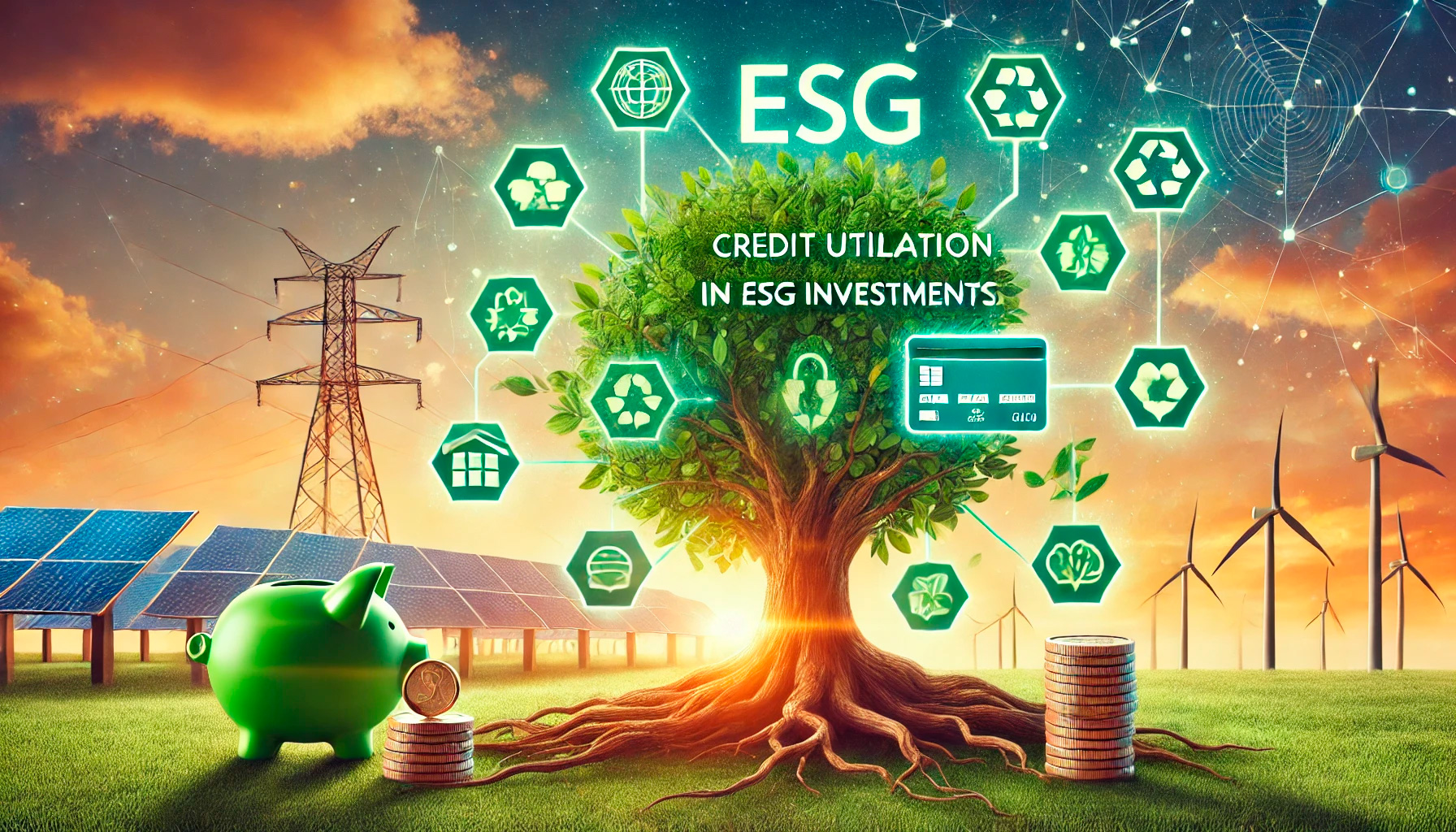In recent years, Environmental, Social, and Governance (ESG) investing has gained significant momentum as more investors seek to align their financial goals with their values. ESG investments focus on companies and projects that prioritize sustainable practices, social responsibility, and good governance. However, like any form of investing, ESG opportunities often require substantial capital. This is where credit utilization can play a crucial role in helping investors access these high-potential investments while contributing to a more sustainable and ethical future.
In this guide, we will explore how credit can be used to fund ESG investments, the benefits of doing so, and how to manage risks associated with leveraging credit in this emerging sector.
Understanding ESG Investments
ESG investments go beyond traditional financial metrics and focus on the impact a company or project has on the environment, society, and its internal governance. Investors interested in ESG principles may prioritize companies that implement renewable energy solutions, maintain ethical labor practices, reduce their carbon footprint, or foster diversity and transparency in leadership.
Some common ESG sectors include clean energy, sustainable agriculture, and ethical tech. These industries are not only attractive to value-driven investors but are also expected to see strong growth as governments and businesses worldwide commit to more sustainable practices. However, like any investment, accessing these opportunities often requires capital—capital that can be sourced through credit if used wisely.
Using Credit to Fund ESG Investments
Credit utilization for ESG investments allows individuals and businesses to fund these projects without needing to wait years to accumulate enough savings. By borrowing funds, investors can act on ESG opportunities immediately, positioning themselves for both financial returns and positive social and environmental impact.
There are several ways to use credit for ESG investments:
1. Green Bonds
Green bonds are fixed-income securities issued to raise capital specifically for projects that benefit the environment, such as renewable energy or pollution reduction initiatives. These bonds are becoming increasingly popular among institutional investors, but individual investors can also gain exposure to them. By taking out a personal loan or utilizing a line of credit, investors can purchase green bonds to support environmental projects while earning steady returns.

2. ESG-Focused Real Estate
Real estate investments can also align with ESG principles, especially when it comes to sustainable development. Credit, such as a mortgage or home equity line of credit (HELOC), can be used to purchase or develop energy-efficient buildings, eco-friendly housing, or properties that promote social equity, such as affordable housing projects. By investing in sustainable real estate, investors can combine the growth potential of property investments with the positive impact of supporting environmentally responsible projects.
3. Impact Investing through Credit
Impact investing is a subset of ESG that directly targets investments designed to generate a measurable positive impact on society or the environment. Using a business line of credit, for example, investors can finance start-ups or companies that are actively working to solve global challenges such as climate change, poverty, or access to clean water. This type of investing allows credit utilization to be used as a force for good while also aiming for profitable returns.
Advantages of Credit Utilization in ESG Investing
Using credit to fund ESG investments comes with several benefits, both for the investor and for society as a whole. These advantages include:
- Accelerated access to ESG opportunities: Credit allows investors to seize ESG investment opportunities quickly, especially in rapidly growing sectors like renewable energy or sustainable tech.
- Long-term growth potential: ESG sectors are expected to see substantial growth as governments, corporations, and consumers demand more sustainable solutions. Leveraging credit enables investors to take a stake in these future-oriented markets early.
- Positive societal impact: In addition to financial returns, ESG investments help contribute to environmental sustainability, social justice, and better governance practices in companies.
- Tax advantages: In some cases, interest on loans or lines of credit used to fund investments may be tax-deductible, further enhancing the financial benefits of credit utilization in ESG.

Managing Risks When Using Credit for ESG Investments
While using credit to invest in ESG can offer significant rewards, it also introduces risk. Borrowing money to invest means you’ll have to repay the loan regardless of whether the investment performs well or not. Therefore, risk management is crucial for any credit-based investment strategy, especially in the evolving ESG space.
1. Diversify Your ESG Portfolio
Diversification is key when using credit for investments, including ESG investments. Spread your funds across different sectors—such as renewable energy, sustainable agriculture, and social impact projects—to reduce exposure to underperformance in any single area. By balancing high-risk, high-reward investments with more stable options, you can ensure more consistent returns while managing credit obligations.
2. Focus on Long-Term Growth
Many ESG investments, particularly those in clean energy or technology, require time to mature and show returns. Investors using credit should adopt a long-term mindset, focusing on investments that will yield returns over several years rather than short-term gains. This approach will help offset borrowing costs and allow time for the positive impacts of the investment to materialize.
3. Monitor Market Trends
The ESG sector is still evolving, with changes in regulation, government policy, and consumer demand shaping its trajectory. Investors should stay informed about market trends to ensure their ESG investments remain viable and profitable. Monitoring these trends will also help you adjust your credit utilization strategies as needed, such as refinancing loans or adjusting your portfolio to align with new opportunities.
Example of Credit Utilization in ESG Investing
Let’s consider an example of an investor who uses a business line of credit to invest $50,000 in a renewable energy start-up focused on developing solar power solutions for underserved communities. The start-up’s mission aligns with both environmental and social impact goals, and the investment has the potential for high returns as the demand for renewable energy grows.
In this case, the investor utilizes credit to gain early access to a growing sector, positioning themselves for financial gains while supporting a project with meaningful environmental and social benefits. As the company grows and becomes profitable, the investor repays the line of credit while earning dividends or capital gains on their initial investment. By managing cash flow and staying informed about market developments, the investor is able to use credit as a tool for both personal financial growth and societal impact.
Conclusion
Credit utilization can be a powerful tool for investors looking to access the growing opportunities in Environmental, Social, and Governance (ESG) sectors. By strategically leveraging credit, investors can contribute to positive societal and environmental changes while benefiting from the long-term growth potential of ESG investments. However, it’s essential to manage risks effectively, focus on diversification, and maintain a long-term outlook to ensure successful credit-based investments in this evolving space. With the right approach, ESG investments funded by credit can provide both financial returns and meaningful impact.


